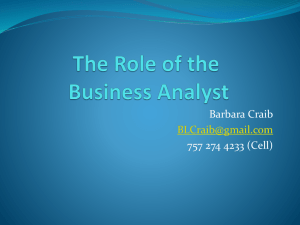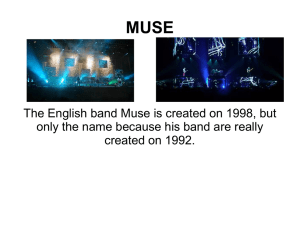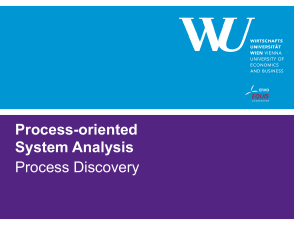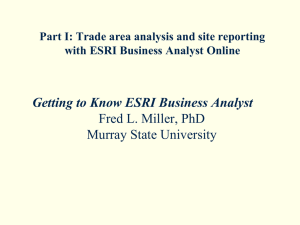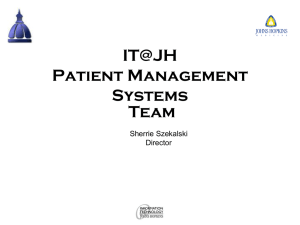Introducing the Career Management Program
advertisement
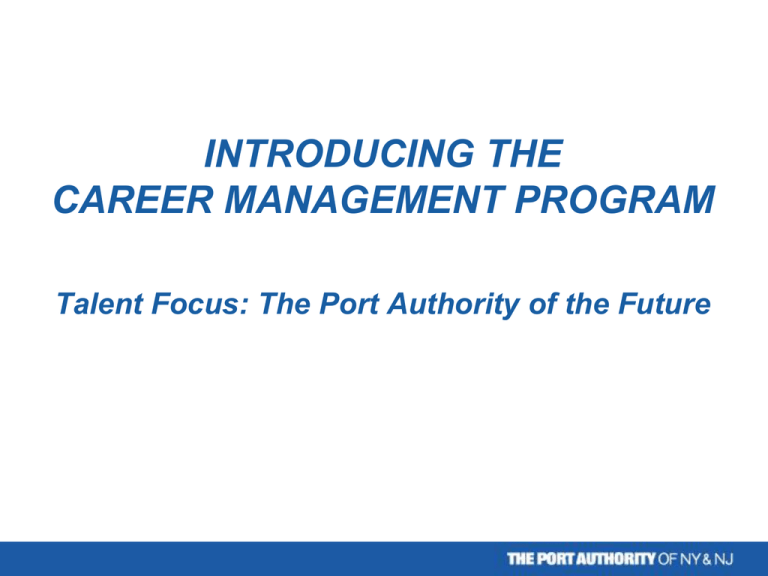
INTRODUCING THE CAREER MANAGEMENT PROGRAM Talent Focus: The Port Authority of the Future Goals of Career Management Simplify Agency hierarchy Broaden and deepen skills and capabilities Encourage movement across functions Recognize expertise and specialization Ensure market alignment Focus on contribution and impact Career Banding A job classification structure that groups jobs based on broad similarities Career Lattice An organizational tool that encourages multi-directional career movements External Benchmarking A job valuation method that prices jobs against market-defined pay levels Performance Management A more normalized performance distribution curve to enable meaningful pay differentiation Career Management Career Banding Career Management EM 1/2 Career Bands EM 3/4 FP 6/7 BAND 7 BAND 6 B 97 Salary ranges connected to jobs; no longer connected to the bands FP 4/5 MT 97 B 95/96 FP 3 MT 95 / 96 Job responsibilities and reporting relationships remain the same BAND 5 BAND 4 B 93/94 MT 93/94 EDP 6/7 FMN 5/6 BAND 3 FMT 5/6 14-grade structure moving to 7 Career Bands F0 5 B 90/91/92 EDP 3/4/5 MT 90/91/92 FMT 4 D 6/7/8/9/10 BAND 2 FO 2/3/4 ET 4/5 = Manager Track = Individual Contributor Track E 3/4/5 B 79/80/81 E 1/2 ECT 15 NCL 14/15/19/21/22 BAND 1 Career Banding Criteria Knowledge and Skills Includes breadth and depth of technical knowledge, agency knowledge, and management skills Leadership Includes providing direction, building staff capabilities, project/resource management, and persuasion/influence engagement skills Problem Solving Includes complexity of problems, precedence, use of judgment, and consideration of risk Teamwork Includes collaboration, knowledge sharing, open communications, and cultural awareness Impact Includes impact of decisions, scope of impact, accountability, and budget impact Key Points: Career Banding Significant, meaningful differences between bands Consistent application of band criteria Simplifies job hierarchy Identifies competencies, skills, and level of impact required of positions at different levels Career Lattice Career Management Career Lattice Rewards and encourages multi-directional career movement Expands career opportunities beyond the traditional “career ladder” Promotes breadth (as well as depth) of experience and skills to build “portfolio” An Example of Lattice Sample Titles Manager, Corporate Financial Services (B96) Senior HR Executive (B96) Band Manager, Business Services (B96) Band 4 Executive Policy Analyst (B95) Supervising Financial Analyst (B95) HR Executive (B95) Executive Business Manager (B95) Principal Policy Analyst (B94) Principal Financial Analyst (B94) Principal HR Rep (B94) Principal Business Manager (B94) Band 3 Senior Policy Analyst (B93) Senior Financial Analyst (B93) Senior HR Rep (B93) Senior Business Manager (B93) Staff Policy Analyst (B92) Staff Financial Analyst (B92) Staff HR Rep (B92) Staff Business Manager (B92) Associate Policy Analyst (B91) Associate Financial Analyst (B91) Associate HR Rep (B91) Administrator (B91) Assistant Policy Analyst (B90) Assistant Financial Analyst (B90) Assistant HR Rep (B90) Band 2 Key Points: Career Lattice Rewards for career moves that build skills – Incentive for horizontal movement Emphasizes career development Reinforces Agency talent and succession strategies – Breadth – Specialization External Benchmarking Career Management External Benchmarking: Market Pricing Salary surveys compiled by impartial third-party experts based on job content Establishes pay ranges for substantially similar jobs Each survey contains 3,000+ organizations, 1,200+ position titles, and 1.8 million employees Includes private, public, and government Adjusts salaries for geographic region Benchmarking completed in 2013 (will be reevaluated every two years) External Benchmarking in Action Job Title Market Base Salary 25th Customer Service Rep $25,000 PA Customer Service Rep $61,540 BUILDING MARKET REFERENCE RANGE 60% PA Customer Service Rep $50,000 (MARKET VALUE) $38,460 50th 75th $50,000 $75,000 Key Points: External Benchmarking Creates consistency and awareness about salary ranges in the Agency Aligns internal jobs with external market and pays jobs competitively Positions the agency to compete for and retain talent Performance Management Career Management Performance Management: Core Beliefs Align objectives at the individual, department and Agency level Provide regular feedback Differentiate rewards based on performance Performance-Driven Culture: The Agency View • Check competencies • Immediate action • Change responsibilities • Consistently outstanding contributor • Check capabilities vs. responsibilities • Recognition • Move jobs • Coach for performance • Achieving success • Raise the bar • Manage out • Time & experience • Consistent results • Support & encourage • Continuous improvement • Development awareness • Monitor & build consistency • Stretch & broaden • Development awareness Building Performance 15% Strong Performance 50% • Distinguished contribution to unit and organizational outcomes • Displays a number of exceptional competency strengths • Build confidence Unacceptable Performance • Demonstrates a distinguished level of performance Outstanding Performance 20% Exceptional Performance 15% Overall Performance Ratings Reflect… Individual (absolute) performance – Employee accomplishments achieved through set objectives Competency performance – How an employee approached and completed work, and the behaviors demonstrated Relative performance – Employee accomplishments compared against a set of standards, taking into account the performance of others against the same standards Relative Performance Criteria Note: Each of the following are assessed on a relative basis, comparing actual accomplishments to objectives, standards and Agency competencies. Impact Assesses the effect of one’s accomplishments on division, department, and Agency goals Quality/Quantity Assesses the level of excellence, consistency, and magnitude of accomplishments to achieve division, department, or Agency goals. Aims for value-added deliverables that meet or exceed expectations. Achievement Assesses the extent of completion of objectives and level of core competencies demonstrated to achieve division, department, or Agency goals Effort Assesses the level of work, drive, consistency, and initiative put forward to accomplish division, department, or Agency goals Demonstrated Ability Assesses the depth, breadth, and use of acquired skills to accomplish division, department, or Agency goals Performance Management Process Goal Setting Mid-Year Review Calibration Final Review eRamp Sign-Off Key Points: Performance Management Greater emphasis on skill development Constructive feedback on a regular basis Rewards linked to high performance Standards applied consistently agency-wide Summary: Key Changes Adopting more streamlined, flexible structure through Career Bands Redefining career progression through Career Lattice Valuing jobs and setting ranges through Market Pricing Moving to a reward philosophy that differentiates based on performance through Calibration

